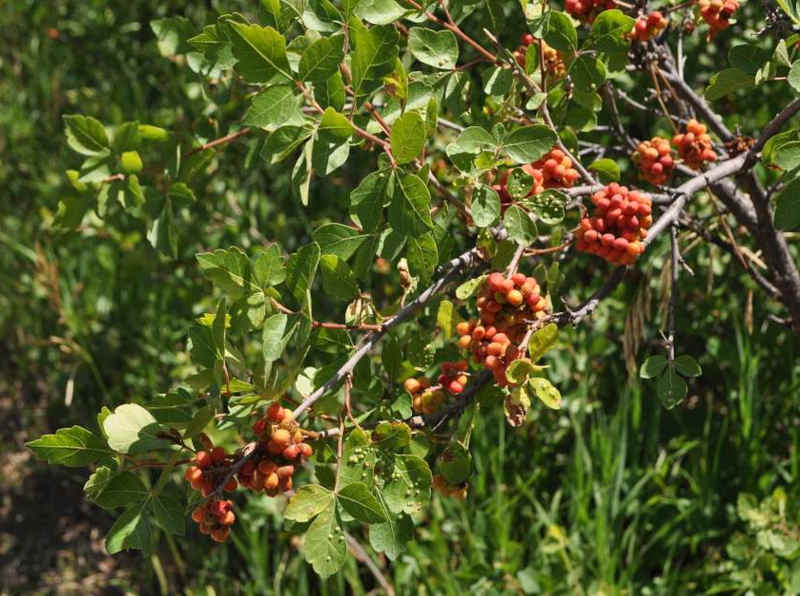Skunbush Great Wild Survival Food

The skunkbush despite the stinky name has as many uses as it has common names. First and foremost in my mind is the fruits which are edible and become available in early summer. Other uses include basket material and edible leaves, planted as a wind break and can grow on some of the worst soils.
So what is this bush and where does it live. The skunkbush is deciduous bush native to North America. Skunkbush grows in a variety of location and practically any soil type. I can be found in the grasslands east of the Rocky Mountains, it grows in the mountain at elevations of 3000 to 9000 feet. And the plant is most notable in the deserts of the Southwestern USA.
You can often find in the arid area along streams or intermentent streams and canyon bottoms. It tolerates periodic inundation of water if it doesn't stay submerged for too long.
As the name implies it is a bush. It grows only to about 8 foot tall max but can be just as wide or wider than it is tall.
The plant produces flowers from April to as late as July and produces a copious amounts of tiny small berries which ripen in the early to late-summer. The Skunkbush fruits will last for months if not eaten. All that is required for storage is to provide a dry space for them to dry out in.
Identification is relatively straight forward. The unstalked leaflets are quite smelly when crushed and this is how the plant gets the name skunkbush. The leaves resemble small oak tree leaves and have a distinct three leaflet arrangement, hence the tri in the scientific name. The flowers are white or light yellow.
The small green fruits which turn reddish when ripe are what interest us here. As stated the fruits are available during the heat of summer. You can make a sort of lemonade out of them by simply collecting the berries and soaking them in water. Drink the lemonade and add more water until the berries no longer provide enough taste to the water. At this point just add more berries to strengthen you drink.
You can also eat the berries straight off the plant. The berries will last for months on the bush and will be eaten by wildlife during the winter is they aren't eaten sooner.
So skunkbush despite the name is quite welcome species to anyone looking for nurishment in the arid regions of North America.

